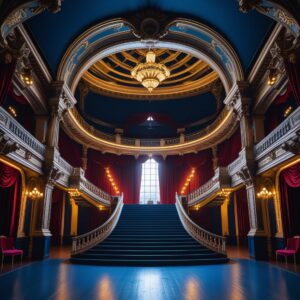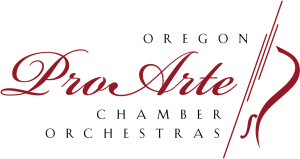In a musical, songs might stop the story for just entertainment. In an opera, the music is a part of the storytelling. Every single note and motif has been created to suggest character details or hint at events. Composers like Verdi, Wagner, and Puccini built their stories around complex musical themes that weave together throughout the performance. You hear a melody early on, and by the finale, it comes back transformed, tying everything neatly together. The orchestra is an emotional narrator in its own right.
Opera singers spend years perfecting breath control, voice projection, and acting—all without microphones. Their voices must pierce through a full orchestra while delivering delicate emotional shades. It’s the marriage of technical prowess and primal passion that creates the distinctive sound of opera—powerful, expressive voices that can fill huge spaces with pure emotion.
Drama on Stage
The performers absolutely must act. Full character embodiment is the requirement. The best operatic performances are very precise in balancing the singing and acting. It’s a very physical storytelling form, where every gesture, glance, and movement supports the story being told in song.
What makes opera acting special is the way the performers show feeling without simply using words. Because many operas are sung in Italian, German, and French—languages not understood by a majority of the audience—viewers tend to rely on the singer’s voice, facial expression, and body language for much of the meaning of what is happening on stage. Thus, theatricality must be heightened—a larger-than-life approach that magnifies emotions and reactions.
Because opera characters are often archetypal—hero, villain, star-crossed lover—the actors get to plunge into some very classical human experiences. Their love, power, betrayal, and redemption struggles come forth with a rawness that can be refreshingly blunt. The intensity of the singing combined with the subtleties in acting creates a dense, rich narrative that you don’t just see but directly associate with the characters.
 The Spectacle
The Spectacle
The spectacle on stage—from opulent costumes to breathtaking sets—ups the ante, turning each production into a feast for the eyes. Opera houses are designed to support this grandiosity with tiered seating, ornate balconies, and superb acoustics, all contributing to a heightened sensory experience.
Unlike minimalist theater, opera sets frequently transport audiences to vividly imagined worlds. Whether it’s the royal courts of ancient Italy or mystical castles in far-off lands, the attention to detail helps weave a believable backdrop for the story. Lighting design, too, plays a key role—shaping mood, indicating time of day, or highlighting critical moments.
Costumes define character identity at a glance, indicating status, personality, and even internal conflict. When a soprano steps onto the stage clad in an elaborate gown with rich textures and colors, it immediately signals her role and emotional state. Plus, the visual elements add an exciting layer of symbolism or metaphor that complements both music and drama.
The Synergy of Elements
What really sets opera apart is how all these elements—music, drama, and spectacle—meld into a single cohesive whole. Together, they create an emotional intensity that’s difficult to replicate elsewhere. When the orchestra bursts into a sweeping melody as a tragic heroine sings her heartache amidst an awe-inspiring set, the audience feels that moment deeply.
Composers work with librettists (the writers) to shape the story through music and text. Directors interpret the work visually and dramatically, while designers craft sets and costumes that bring the narrative into physical form. Performers have to blend vocal excellence with believable acting, all while syncing with the orchestra and technical crew. It’s a massive team effort, and when everything clicks, the result is pure magic.
Even centuries-old works still speak to modern audiences because they explore fundamental human emotions and stories. The grandeur might be classical, but the feelings—love, loss, joy, despair—are as real and raw now as they ever were.
Experiencing Opera Live
Watching opera live is an entirely different experience from listening to recordings or watching on screen. The immediacy of a live performance, the energy from both the stage and the audience, creates a shared moment that’s incredibly powerful. As most opera houses feature remarkable architecture and acoustics, the sound balances perfectly with the imagery and drama to captivate viewers completely.
Being physically present also allows you to appreciate the subtle interactions—a nervous glance exchanged between characters, the sweep of a hand across a dramatic costume, or the unity of the orchestra and singers in real time. The scale and atmosphere can be overwhelming but in the best way. Even if you’re new to the art form, the emotional clarity and theatrical expressiveness usually pull you in quickly.
To get the most out of a live opera, it helps to familiarize yourself with the story beforehand. Knowing the plot and characters lets you focus on the music and performances instead of trying to keep up with the narrative. But don’t worry about understanding every word; the power of opera transcends language barriers through its unmatched combination of music and drama.
Keeping It Fresh and Relevant
Contemporary composers and directors continually reimagine and reinvent opera to connect with today’s audiences. New works tackle current social themes, experiment with musical styles, or reinterpret classics through innovative staging.
For example, some modern productions bring in multimedia elements like video projections or electronic soundscapes, blending tradition with technology to enhance storytelling. Directors might set an 18th-century opera in a 21st-century urban setting, making the timeless emotions feel fresh and relatable.
Revivals of masterpieces alongside world premieres celebrate the genre’s rich history while pushing artistic boundaries. This evolving dialogue between past and present makes opera an exciting space for creativity—a place where tradition fuels innovation, and where every performance is a unique event.
